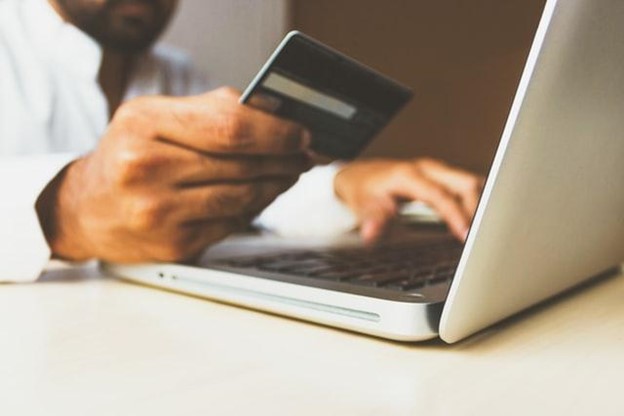Secure Payments Online: 6 Signals for Safe Transactions
Image URL: https://unsplash.com/photos/Q59HmzK38eQ
The world is moving ever-closer towards a cashless society. Increased adoption of smartphones, higher internet penetration rates, and a deadly global pandemic have all contributed to the unprecedented growth of online payments around the world. While most consumers enjoy the convenience of making digital payments, they are also increasingly concerned about the safety of online financial transactions.
Also Read: Use 5 things to extend the battery life of smartphones | How is AI having an impact on people from all walks of life?
According to a survey conducted by Visual Objects in 2020, more than 69 percent of consumers are concerned with online payment security. An explosion of cyberattacks and data breaches during the pandemic has further increased consumers’ fears that e-commerce businesses are not doing enough to protect their financial data. Consumer distrust in a company’s cybersecurity measures has profound effects on business profitability.
The Importance of Assuring Payment Security
Nobody likes losing money or falling victim to theft. An insecure payment network makes it easier for cybercriminals to steal sensitive corporate and consumer data to commit financial fraud. Credit card fraud cost businesses and consumers around the world more than $28.65 billion in 2019. For consumers, the perception of an insecure payment network means an increased likelihood of financial loss.
If consumers think your cybersecurity measures are inadequate, they are less likely to trust you with their payment information. According to the 2019 Edelman Trust Barometer Special Report, more than 81 percent of consumers say they need to trust a brand before buying from them. Consumer distrust in your system’s security is a great barrier to business growth as it leads to fewer sales opportunities.
Also Read: 7 Reasons Why You Should Invest in IT Support | Benefits of Machine Learning in Point of Sale
There are some effective strategies businesses can implement to signal that their online payment network is safe. Use these six signals to relieve consumers’ online payment security concerns:
- Multiple Payment Options
With hacker attacks occurring every 39 seconds, it is no wonder most people worry about sharing their credit card details with e-commerce businesses. Consumers are more likely to share sensitive financial information with corporate giants than smaller businesses as they believe larger companies have the resources necessary to safeguard their payment networks.
This means smaller businesses will lose customers to retail behemoths like Amazon and Walmart as they are perceived to be more trustworthy with keeping consumers’ credit card data secure.To compete with bigger rivals and relieve consumers’ security concerns, e-commerce businesses should offer alternative cashless payment options.
Alternative Online Payment Solutions
As most cases of online payment fraud involve credit cards, offering alternative transaction methods can alleviate consumers’ data security concerns. Non-credit card online payment solutions like electronic checks (eChecks) do not expose or store customers’ payment information on the merchant’s servers.
The only information merchants need to process eCheck payments are the customer’s name and email address. Merchants email customers a digital invoice and the shopper sends the payment online via a third-party platform. Consumers do not share payment information with the e-commerce merchant, which can help relieve their data security concerns.
- PCI Compliance
Another effective strategy for relieving consumers’ online data security concerns is to signal that your business is PCI compliant. The Payment Card Industry Data Security Standards (PCI DSS) is a set of cybersecurity measures mandated by the card brands like Visa and Mastercard to reduce the risk of credit card fraud. Any merchant that accepts credit cards online must comply with PCI standards to protect consumer’s payment information.
PCI’s cybersecurity protocols ensure a safe online environment for storing, processing, and transmitting credit card information. There are 12 requirements that e-commerce businesses must implement to stay compliant with PCI protocols. Some of these compliance requirements include:
- Changing passwords frequently
- Maintaining an updated anti-malware software
- Installing a firewall to block unauthorized system access
- Testing security systems regularly to check for vulnerabilities
- Using encryption, truncation, and masking to protect cardholder data
Verifying PCI Compliance
Compliance with PCI protocols must be verified regularly by independent and qualified security assessors to ensure businesses are implementing the latest internet safety standards. The PCI council demands annual IT audits to evaluate and confirm that the merchant is adhering to the latest cybersecurity guidelines specified by the organization.
Also Read: How Fintech is Going to be Big in 2021 | Best Android App Development Tools in 2021
While performing an independent IT security audit can be costly, obtaining a formal validation of PCI compliance is an investment in business growth. When the major credit card brands certify that your networks are secure, customers are more likely to trust you with their payment information. Consumer trust in your brand leads to more sales, helping promote business success.
- SSL Certificate
The little padlock icon in the left corner of the address bar is one of the most well-known symbols of online security. Browsers display the lock icon before a URL only when a website has a Secure Sockets Layer (SSL) certificate. SSL technology uses encryption to make user data inaccessible to unauthorized third parties, protecting sensitive personal information like email passwords and credit card details from cybercriminals.
If a website’s address begins with HTTPS instead of HTTP, it means the website has a valid SSL certificate and its data is secured with encryption technology. In January 2021, more than 89 percent of websites had valid SSL certificates. Without a valid SSL certificate, browsers like Chrome warn users not to visit the website as it is deemed to be “Not Secure or Dangerous.” If you’re among the minority without an SSL certificate, you should get one as soon as possible.
How to Get an SSL Certificate
Getting an SSL certificate and a padlock before your URL is one of the most conspicuous signals you can send to consumers that your business prioritizes network security. There are many ways e-commerce businesses can obtain an SSL certificate for their website.
You can purchase a valid certificate from your hosting provider or get a free one from Let’s Encrypt, a non-profit organization that provides SSL certificates to promote internet security. Securing your site’s data with encryption technology will lead to safer financial transactions, increasing consumer trust in your brand.
- Two-Factor Authentication
Most data breaches at companies occur due to compromised login information. A Verizon Data Breach Investigations Report in 2018 found that 81 percent of hacking-related breaches happen because of poor or stolen passwords.
Hacking into employee or customer accounts gives cybercriminals access to valuable data they can use to commit identity and credit card fraud. Using multiple layers of identity verification systems limits unauthorized access to your network, reducing the risk of data breaches.
Two-factor authentication (2FA) is a security process that requires two different types of personal information to give the individual access to an account. A hacker with stolen login credentials will need more than just the user’s password to gain access to the system.
2FA will ask for additional information, such as biometric data, SMS code, or answers to secret questions to verify the user’s identity before allowing them to log in. Providing additional layers of security to control system access is an effective signal that your customers’ data and payment networks are safe from hackers and identity thieves.
Also Read: How to Set Up Your Own Live Stream Website for Your Audience? | Top Document Management Solutions Providers In 2021
How to Set Up 2FA on Your System
2FA will provide an additional layer of armor to protect your company’s databases and payment platforms from cyberattacks. When customers see that your user accounts are twice as hard to penetrate, they are more likely to trust you with their sensitive financial information.
Fortunately, it is easy for businesses to set up 2FA on their system. Many popular business applications ⎼ like Office 365 and Salesforce ⎼ offer 2FA for enhanced security. If your business program does not provide 2FA capabilities, consult with an IT firm to get the best two-factor authentication solution for your users’ accounts.
- Fraud Mitigation Tools
The biggest concern consumers have with online payment security is the risk of credit card fraud. Credit card fraud is when a criminal uses stolen payment information to make a purchase you didn’t authorize. Research conducted by FICO in 2017 found that American consumers fear payment fraud more than terrorist attacks and the death of loved ones. Adopting fraud mitigation tools is an important signal that shows your business promotes safe online transactions.
Fraud mitigation tools are software solutions that make it more difficult for cybercriminals to use stolen credit card data to make unauthorized online purchases. Online credit card fraud is now the most prevalent form of payment fraud. If a fraudulent transaction is processed on your online payment platforms, your businesses will suffer considerable financial and reputational damage. Many customers will stop buying from a business that enabled a fraudulent transaction because they no longer trust them.
Popular Fraud Reduction Solutions
It is impossible for e-commerce businesses to completely eliminate online payment fraud. But there are many effective solutions that you can implement in your payment platforms to reduce their incidence. Some popular fraud mitigation tools you can use include:
3D Secure.Three-Domain Secure or 3D Secure is an additional layer of security for verifying the identity of the cardholder to eliminate payment fraud. When making online debit or credit card payments, the customer is directed to their bank’s website where they enter additional information such as a card password or an SMS code to confirm the transaction.
Address Verification Service. Address verification service (AVS) is an authentication method that checks whether the billing address provided by the online shopper matches the one on their debit or credit card account. Most cybercriminals with stolen card data do not have the original cardholder’s billing address, making this service very effective for minimizing online payment fraud.
- Display Trust Symbols
It takes a few seconds for consumers to form an opinion of your online business. In those few seconds, the consumer will determine whether you are trustworthy to do business with. Your business may have the most cutting-edge cybersecurity and fraud mitigation technologies implemented. But if you don’t show customers your credentials, how can they trust you with their sensitive payment data?
Also Read: Secure Yourself from these Cyberthreats | 4 Ways Chat Bots Help to Boost Your Ecommerce Sales
Displaying trust symbols on your website is one of the most effective strategies for signaling that your business has a secure payment network. Do you have an SSL certificate? Are you accredited by the PCI Security Standards Council? Is your network secured with the best anti-malware software like Norton or McAfee? Display all your trust symbols and logos in a visible spot on your homepage to gain consumer trust in your brand and payment network.
Improve Payment Security to Gain Consumer Trust
As people increasingly turn to the internet for purchasing goods and services, consumers’ concerns with online payment security will continue to grow. Fears of data breaches and online payment fraud will make secure transactions a top priority for consumers.
Businesses that invest in online payment security will reap great rewards in the form of increased sales and enhanced brand reputation. Use these six signals for safe transactions to assure payment security, gain consumer trust, and promote business success.
Author Bio:

Katie Tejada is a writer, editor, and former HR professional. She often covers developments in HR, business communication, recruiting, real estate, finance and law, but also enjoys writing about travel, interiors and events.










